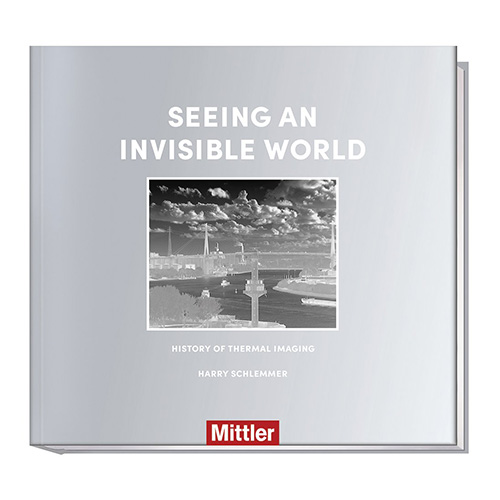Beschreibung
Harry Schlemmer
Seeing an Invisible World – History of Thermal Imaging
Artikel-Nr.: 978-3-8132-0980-8
Seeing an Invisible World – Thermal imagers play an important role in today’s military optics and are employed in many surveillance and weapon systems. The vital advantage relative to visible observation means is that the function is solely based on the invisible thermal radiation emitted by the observed objects themselves. Therefore thermal images can be obtained even in darkness independent from any artificial illumination. Additionally, by day all objects that differ in temperature from their surroundings can be recognized. This is far beyond the capability of visual devices because the wavelength of thermal radiation is larger than that of daylight by a factor of 10 to 20.
After tentative beginnings in the 17th and 18th century the discovery of infrared thermal radiation, invisible to the human eye, by British astronomer Sir William Herschel was the launching point for modern thermal imaging technology.
In the following 100 years the scientific groundwork for thermal imaging was laid and electrical detectors for thermal radiation with higher and higher sensitivity were developed as well. The climax of scientific work was the presentation of a universal radiation law by the German physicist Max Planck on December 12, 1900; this date is seen as the birthday of quantum physics today. The first thermal pointers of practical use (Donau 60) were deployed by German forces towards the end of World War II already.
While photoelectric single-element detectors for infrared radiation were developed in the first half of the 20th century, from the beginning of the 1970s on linear detector arrays with high numbers of elements could be produced by means of photolithography. Together with a simple oscillating mirror as an optical scanner “moving thermal images” could be obtained for the first time.
The extremely high development costs of the first thermal imagers worldwide led to more cost-effective modular systems like the American-German “Common Modules” which were produced in vast numbers of more than 50 000 during the time of the Cold War. In the mid-1990s, these analog devices made way for digital thermal imagers which still used linear detector arrays but could be integrated into overall systems (reconnaissance platforms, periscopes) much easier. The era of classical scanning thermal imagers ended with the introduction of two-dimensional “staring” thermal detectors around the year 2005.
The book “Seeing an Invisible World” offers an exciting synopsis of the international development of thermal imagers from the historical beginnings until the introduction of the staring thermal imagers and their exemplary application in the medical and the military field. The work presents numerous instructive photographs, figures and technical diagrams and is a must for all technically interested readers and members of the optical community. Moreover, it is intended to share a touch of the fascination arising from the capability to “see an invisible world” in the darkest night without any illumination.
About the author
Harry Schlemmer is a physicist by profession and an acknowledged expert on optical and infrared system design. He has worked in the military optics field for many years, at first for Carl Zeiss – Sondertechnik and afterwards for its successor company known as HENSOLDT Optronics today
Details:
Titel: Seeing an Invisible World – History of Thermal Imaging
Pages: 272 Seiten
Format: 26 x 24 cm
Cover: Hardcover with dust jacket
Release: June 2018










